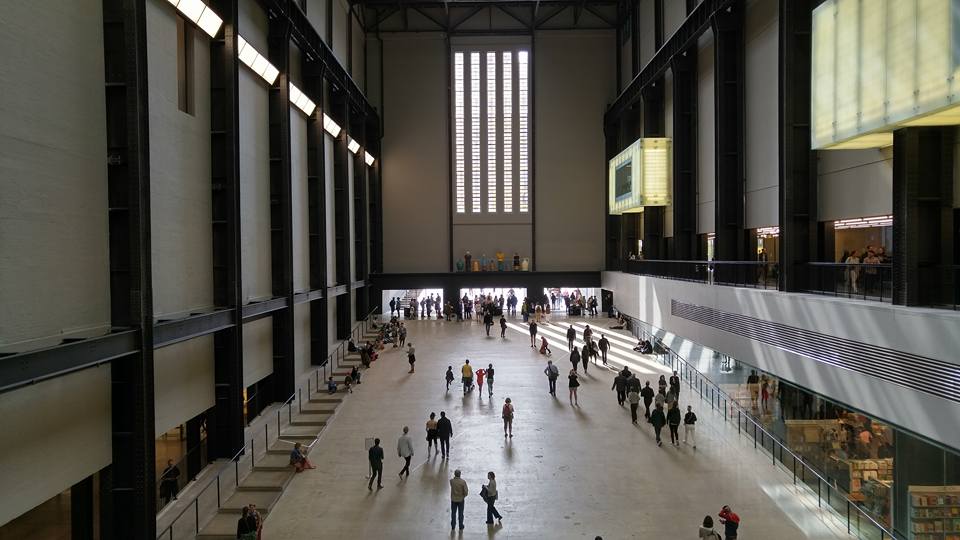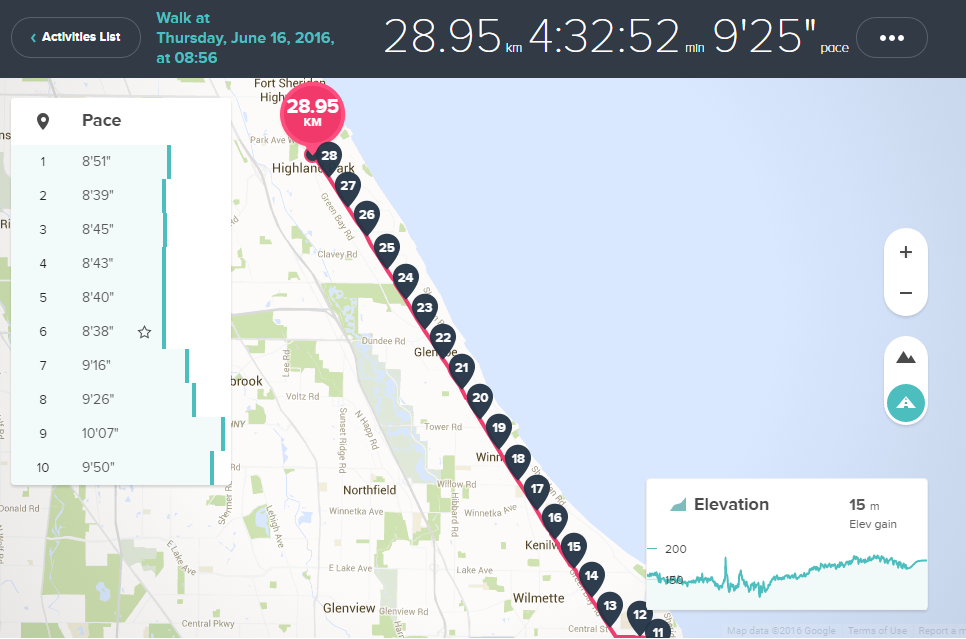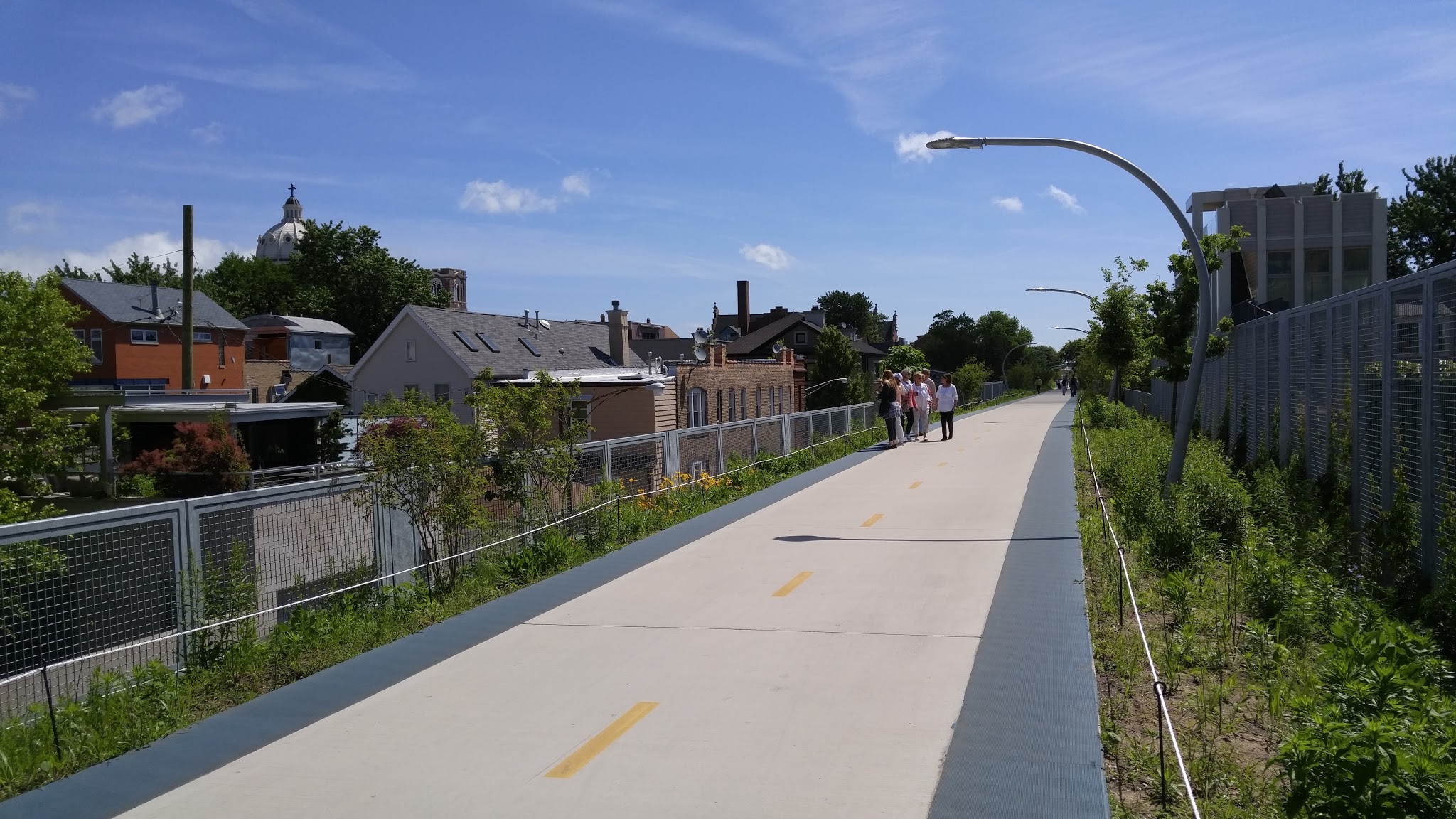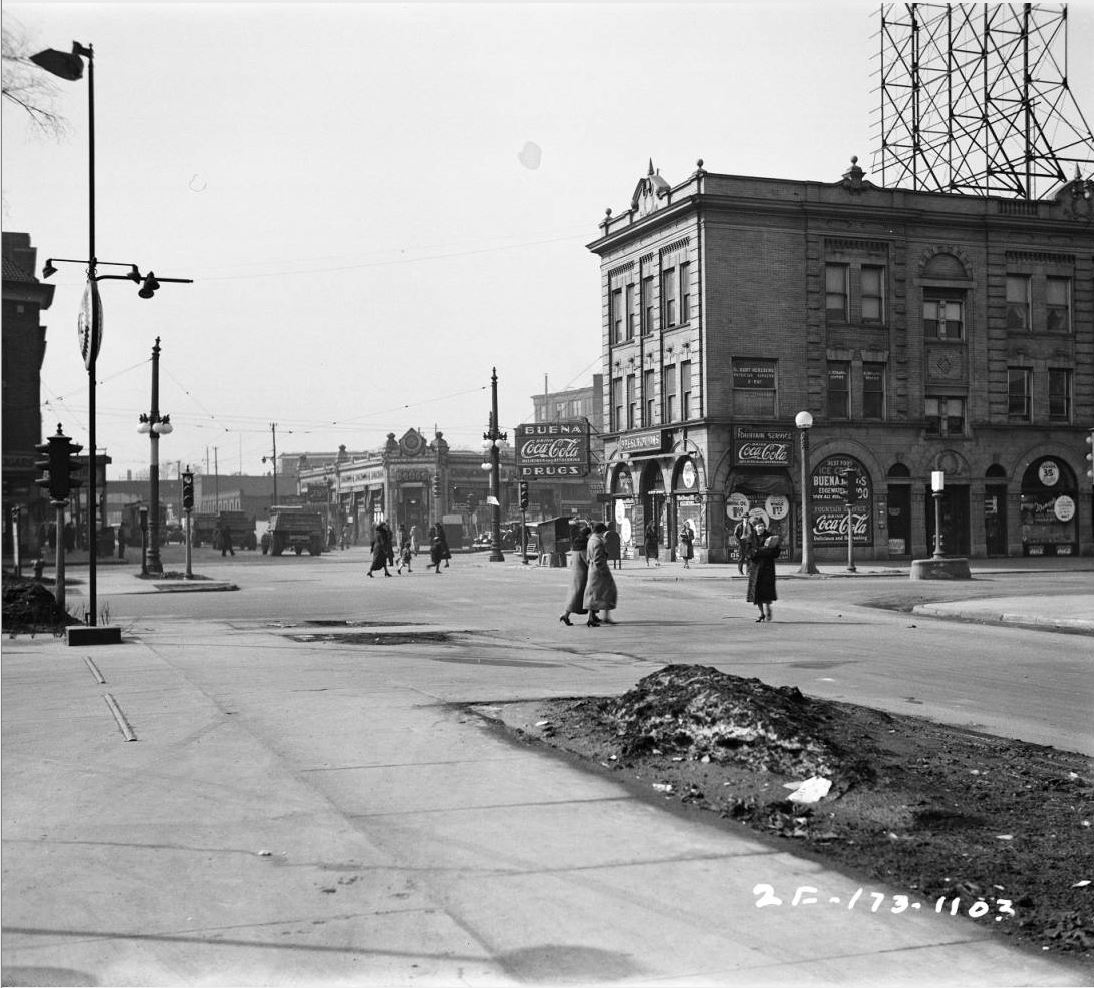Today was pretty full. I took a train to Tring, hiked for two hours, came back to London, and walked around Kensington for a couple more. Now it's 11pm on Sunday night and everything is closed.
I won't have all the photos I took yesterday and today ready until I get back to Chicago, but here are a couple. First, the Tate Modern:

Second, this guy, who rode in my train carriage on the way back from Tring:

These are just from my phone. I did lug my real camera all over the hills of Buckinghamshire today, so I'll have real photos later in the week.
Once again, here's a list of news items I haven't fully digested but want to when I have a few free minutes:
There's another major story that I'm following, about which I'll post in a few minutes.
Yesterday's walk had a number of consequences, including some discomfort that has persisted until today. But I also blew away my Fitbit personal records. Yesterday's results:

Which makes my top 5 now look like this:
Yesterday's weather worked out, too. It was almost completely overcast, until I hit the heavily-wooded sections of the trail up in Glencoe and Highland Park. And it was cool; I don't think it got above 20°C. So I didn't sweat too much and I was able to keep a fairly brisk pace.
I will now limp to my lunch appointment. And I'll post Parker's birthday photo later this afternoon.
Today's light walk: 28.95 km in 4½ hours, totaling 32,595 steps. Voilà:

I am now going to take a shower.
Parker's birthday photo will be up tomorrow. He's 10!
I'm traveling to the Land of Uk (aka The United Kingdom of Great Britain and Northern Ireland) next week, which got me wondering if I've actually seen the country in every month of the year. So I worked it out, and yes, as of 1 September 2013, I've seen the UK in every month of the year:
| January |
2001, 2010, 2011 |
| February |
2001, 2010, 2015 |
| March |
2012, 2014 |
| April |
2011 |
| May |
2009, 2015 |
| June |
1992, 2014, 2015, 2016* |
| July |
1992 |
| August |
2009, 2013 |
| September |
2013, 2015 |
| October |
2002, 2009, 2012, 2014 |
| November |
2001, 2009, 2010 |
| December |
2002, 2014, 2015 |
* Planned
In all, I've made 34 discrete trips to the UK since my first on 11 June 1992, with 31 arrivals at Heathrow, 2 at Gatwick, and 1 at Dover (by ferry from Belgium). Oddly, only half—17—have been on non-stop flights from O'Hare. And I've never flown non-stop from O'Hare to any UK airport other than Heathrow.
File this away under "personal trivia."
The weather today is the kind that we only get about 15 or 20 days of the year in Chicago. It's 19°C and totally sunny with a light breeze from the east. And I'm actually able to take advantage of it today.
That's why Parker and I just got back from a 2½ hour, 14.5 km walk.
Yes. We walked that far. He's now out cold, and I'm having a spot of lunch. And shortly a shower.
The total damage was 14.51 km in 2:24:57 (not including two stops at Starbucks along the way), for a pace of 9' 59" per kilometer—just a shade faster than 16 minutes per mile.
My Fitbit tells me I kept my heart rate between 115 and 125 the whole way, burned 1,289 calories, and took 17,429 steps. The last two kilometers were actually faster than the first two, because Parker always needs to get things out of his system in the first few minutes of a walk, and that takes time.
I don't think I'll make him walk any farther today, except to the front lawn.
We also got our first walk on The 606, Chicago's answer to the New York Highline:

As the election gets closer, we need to remember that climate change is real and will affect hundreds of millions of people in the next few decades—despite what one of the candidates seems to think. Here's an article from The New Yorker back in December that puts the issue in stark relief:
To cope with its recurrent flooding, Miami Beach has already spent something like a hundred million dollars. It is planning on spending several hundred million more. Such efforts are, in [University of Miami's Geological Sciences chair Hal] Wanless’s view, so much money down the drain. Sooner or later—and probably sooner—the city will have too much water to deal with. Even before that happens, Wanless believes, insurers will stop selling policies on the luxury condos that line Biscayne Bay. Banks will stop writing mortgages.
The latest data from the Arctic, gathered by a pair of exquisitely sensitive satellites, show that in the past decade Greenland has been losing more ice each year. In August, NASA announced that, to supplement the satellites, it was launching a new monitoring program called—provocatively—Oceans Melting Greenland, or O.M.G. In November, researchers reported that, owing to the loss of an ice shelf off northeastern Greenland, a new “floodgate” on the ice sheet had opened. All told, Greenland’s ice holds enough water to raise global sea levels by twenty feet.
Against this backdrop, South Florida still stands out. The region has been called “ground zero when it comes to sea-level rise.” It has also been described as “the poster child for the impacts of climate change,” the “epicenter for studying the effects of sea-level rise,” a “disaster scenario,” and “the New Atlantis.” Of all the world’s cities, Miami ranks second in terms of assets vulnerable to rising seas—No. 1 is Guangzhou—and in terms of population it ranks fourth, after Guangzhou, Mumbai, and Shanghai. A recent report on storm surges in the United States listed four Florida cities among the eight most at risk. (On that list, Tampa came in at No. 1.) For the past several years, the daily high-water mark in the Miami area has been racing up at the rate of almost an inch a year, nearly ten times the rate of average global sea-level rise. It’s unclear exactly why this is happening, but it’s been speculated that it has to do with changes in ocean currents which are causing water to pile up along the coast. Talking about climate change in the Everglades this past Earth Day, President Obama said, “Nowhere is it going to have a bigger impact than here in South Florida.”
An interactive map the New York Times produced in 2012 should scare the bathing suits off Floridians, too.
Chicago historian John R. Schmidt frequently has "Then and Now" features where he shows a part of the city as it appeared when he was a kid against how it appears now. I just found a trove of historical photos produced by the Illinois Dept. of Transportation, including a few dozen from my neighborhood, so I can play the same game.
Here's the intersection of Sheridan, Broadway, and Montrose, looking west down Montrose, from March 1936, more than 80 years ago:

Here's this past Tuesday:

Though some of the details have changed, both buildings flanking the north side of Broadway still exist. But the Wilson Yard development, from 2006, has taken over most of the area between Broadway and the El tracks. And past the El, the mature trees have changed the character of Montrose.
Another thing I notice about photos of Chicago and other U.S. cities before about 1990: the haze. Starting in the 1970s in California and the 1980s elsewhere, governments cracked down on air pollution. Chicago in 1936 would have been intolerably polluted to Millennials. The top photo gives a hint of why.
YouTube user John Meyer has found two films of boat rides on the Chicago River and into the lake. This one is from 1956:
And this one is from 1983: